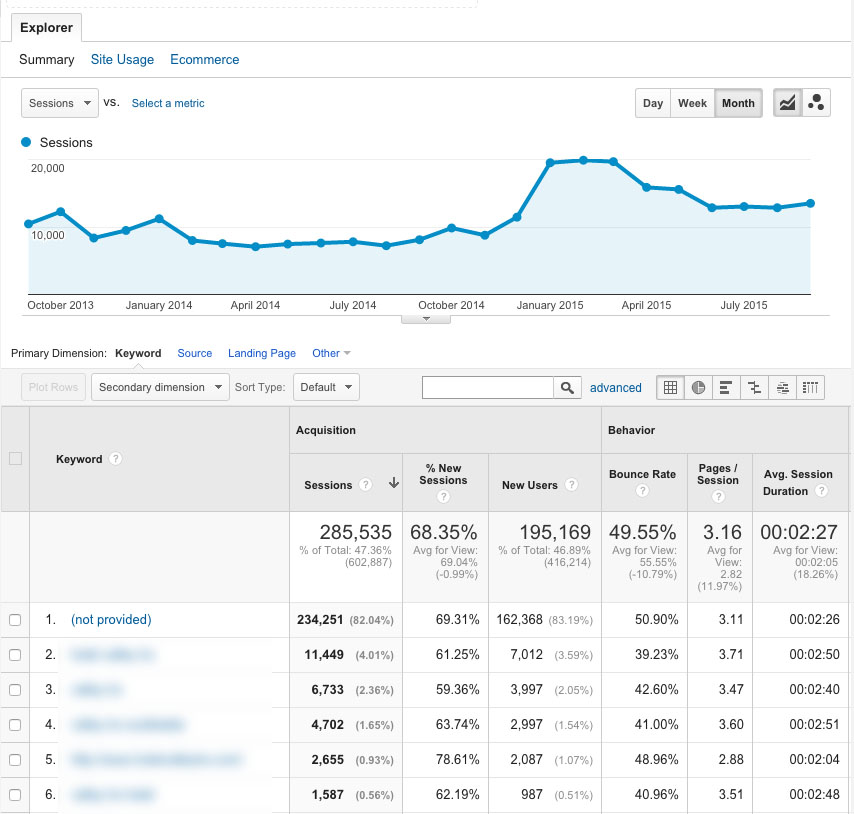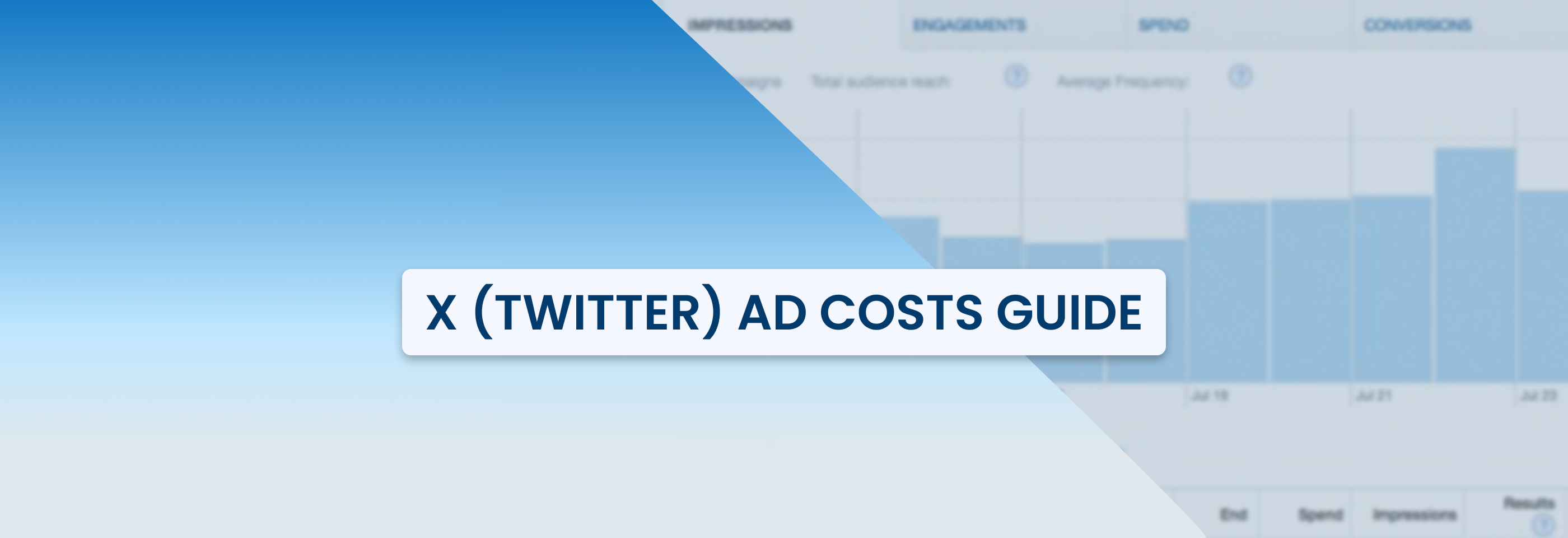How to Find Out What Customers Want
2023-12-25

Are you confident that you've got your customers' wants and needs figured out?
It doesn't matter what your business specializes in or how big the scope of its operations is, customers remain a top priority if you want to succeed. And now more than ever, they want companies to understand their needs and expectations. Companies that fall out of touch with their customer base get outshined by their more savvy competitors. That is why consistent customer research is a necessary ingredient for business growth in the contemporary economy.
Digitization has made research easier, enriching it with new, web-sourced data that allows not only to learn what customers say they need, want, or expect from a product, but also to track and analyze their online behaviors.
Let's see what methods and tools we can employ to gather useful data, both quantitative and qualitative.
Get insights from online behaviors with Google Analytics
If your business has a website, Google Analytics might be one of the best tools in your arsenal for getting to know your existing and potential customers better. You can gather and visualize data on users’ on-site activity by tracking various metrics such as pages per session, session duration, etc. This knowledge can help you understand the needs of your customers that don’t get expressed explicitly but are revealed by user behavior patterns instead.
Here’s what you can learn with Google Analytics:
- Who are your website visitors? You can see their demographic characteristics, interests, products that they are looking for, devices they access your website from, as well as whether they are first-time visitors or frequent guests on your website. This information will help you better define your buyer personas.
- Which keywords bring visitors to your website? If you connect your Google Analytics to Google Search Console, you’ll be able to see what people were searching for when they found your website.
- What do users search for on your website? You can find this out in the ‘Site Search’ section. Additionally, you can see which pages on your website have the longest user sessions, the highest engagement, or the lowest bounce rates. Knowing the best-performing pages on your website can help you in identifying the needs and desires of your customers.
- Which of your products are the most popular? This data is essential for every e-commerce business as it helps to see the intersection between customers’ needs and finances on the one hand, and your products on the other. You can check metrics like product revenue, adds to cart, and refunds, as well as keep an eye on shopping and checkout behavior. You can also see revenue by location to know where your top customers are from.
- What paths do your customers take while visiting and interacting with your website? Providing a smooth website experience based on users’ needs and goals is no less important than providing quality products or services.
While Google Analytics offers many useful metrics (including the custom ones), keep in mind that you shouldn’t rely solely on one or just a few of them. Isolated, they don’t provide much value: try to combine the metrics that are most important to you instead.
Browse Quora
If you’ve ever tried to look up any kind of question on the Internet, it's likely you’re already familiar with Quora - a Q&A platform that boasts over 300 million monthly users and has over 400,000 topics. Apart from satisfying curiosity, it offers a unique possibility of gaining insights about your customers without conducting expensive surveys or interviews. Another great thing about Quora is that it also attracts industry experts, and probably your competitors as well. Their replies can be just as valuable as the answers given by regular users.
Start searching for questions related to your business by typing relevant keywords in the search bar and then filtering the results by type to see queries only.

They can also be filtered by how recently they’ve been posted, so you’ll know what people are talking about at the moment.
Look for questions like these:
- “How to use [product]?”,
- “What is a good tool/solution for [your product’s functionality]?”,
- “Have you used [product]?”,
- “What’s better: [product A] or [product B]?”, etc.
Pay attention to questions related to different stages of the buyer’s journey, from broader queries linked to the top of the funnel (“what is [x]?”) to more specific ones close to the bottom (“best tips for using [x]”).
While you might prefer focusing on popular questions with a lot of upvotes and answers, it’s also a good idea to check for new or older but unanswered queries. Maybe you’ll be able to identify problems that are overlooked or aren't solved by your competitors yet, but might be solved by you.
When you filter the results by type, you can also see related topics and spaces (communities around shared interests). Follow the most relevant ones and get notifications when new questions and replies get posted (for this, enable email notifications in your profile settings).

If you’ve searched through all of the relevant questions, you can always contribute a new one. Make sure that you choose the correct wording for your query and don’t repeat already existing questions. To increase the chances of getting your question answered quickly, you can request answers from people who’ve replied to similar questions before or from specific users whose replies you want to see the most.

Scroll through Reddit
Statistically speaking, Reddit might not be the hottest platform out there: it’s far behind YouTube and Facebook in terms of popularity. However, with 430 million active users from all over the world and more than 100.000 active communities, it shouldn’t be overlooked as a potential source of valuable data.
Reddit essentially consists of subreddits - communities of various sizes centered around certain topics or interests. There, users can freely share information and thoughts, including their customer experiences, favorable and critical opinions on brands and products, tips on how to use them, etc. Redditors are famous for valuing honesty and authenticity above everything else, which means that the opinions they share tend to be candid and straight to the point.
Start exploring by finding threads and subreddits related to your products or services. You can do it by typing relevant keywords in the search bar, or using them in combination with manual search filters such as:
- subreddit:keyword (e.g. subreddit:Nike or subreddit:sneakers),
- or title:keyword.
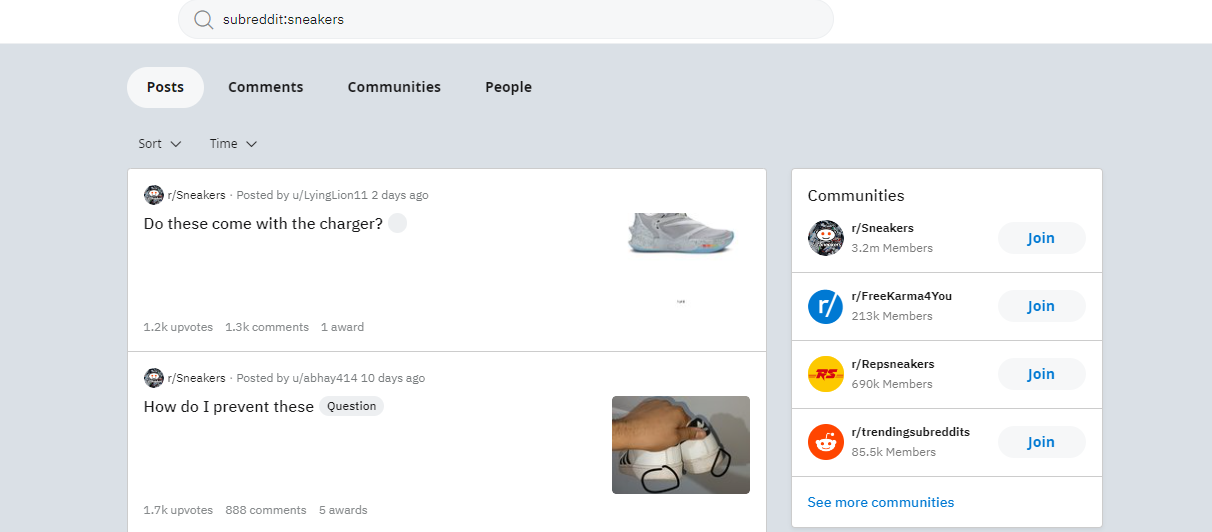
There are many keywords you can use: a brand or a product name (yours or your competitors’), words or phrases that are used in your SEO strategy, your industry’s buzzwords, etc.
Search results will show relevant threads and related subreddits. Follow subreddits where your customers might be and browse threads on them to find the most commonly asked questions and discussed topics. You can search for posts and comments that users find the most valuable by sorting their inputs like that:

Keywords can also be used in combination with words like “problem” or “difficulty” that reveal typical pain points and issues, or “recommendations” to see which products get endorsed by users.
You can also create new threads by asking questions like these:
- “Has anyone used [product]?”,
- “What do you think of [brand/product]?”,
- “What to consider when buying [product]?”, etc.
If your company or industry is generating some traction on the platform, you can even do an AMA thread (“I am [your expertise/job position in a company/industry], ask-me-anything”) in relevant subreddits to see what Redditors want to ask about something related to your line of business.

Analyze Social Media
Whether we like to admit it or not, social media has become one of the most important inventions of our time. And if you’re trying to learn more about your customers, look no further than social media platforms to discover their opinions and product recommendations (such word-of-mouth endorsements are taken very seriously).
Facebook, Instagram, TikTok, Twitter, LinkedIn, YouTube, and Pinterest are among the most popular social media platforms. However, you should pay attention primarily to the ones that your audience uses often.
To discover potential sources of valuable data, search for groups, pages, or accounts related to your business or products. To find relevant comments and posts, you can look up the results for keywords and hashtags relevant to your industry or your brand to see what is being discussed at the moment. If your brand has an active account, you should check your mentions regularly to see comments and posts tagging you.
Remember that it’s important to look not only for what people are saying but also why they are saying it: what needs, wants or motivations are behind their posts and comments? At this stage, it’s necessary to employ social listening - one of the most popular methods of social media research. It will help you discover:
- topics and conversations relevant to your business that your target audience follows and participates in;
- latest industry trends or new products, and how people react to them;
- brand mentions and sentiment: what and how people say about your brand, and how it changes over time;
- customer feedback: what users love and hate about your (or your competitors’) products, what their typical pain points are (search for [product] + keywords like “problem”, “issue”, “difficulty”).
There are many great tools for social listening, such as SproutSocial, Brandwatch, BrandMentions, and others. You can also use Facebook Audience Insights and Instagram insights to learn which groups of users interact with your content the most.
Data gathered from social media will bring you closer to truly understanding your customers and meeting their demands and expectations. In addition to social media, consider checking out the review platforms where your products might be mentioned.
Interact with your customers directly
If you want to know what your customers want or need, why not just ask them about it directly? You can do it via several methods.
Collect feedback
Receiving feedback from your customers can help you measure their satisfaction rates, learn why they use your products (or have stopped using them), and identify the key issues they encounter. This knowledge will also be helpful for customer journey mapping.
A classical way to collect feedback is via surveys. It can be a short survey dealing with a particular topic, or a longer, more comprehensive survey that explores several areas of customer experience.
To get more answers, make sure that your questions are short and your rating scales are logical. If you use open-ended questions, make them engaging and clear. This way customers won’t find your surveys tiresome and will be more likely to submit answers.
You might ask questions such as:
- “What difficulties have you encountered while using our [product]?”,
- “How satisfied are you with our [product]?”,
- “What do you want to achieve with [product]?”,
- “Which features would you like to add to [product]?”, etc.
Or, you can make it more simple for you and your customers and use a satisfaction scale instead, like the classical scale from 1 to 10. Such quantitative data about customers’ satisfaction is easier to collect and analyze.
Create pop-up forms
If done correctly, pop-up forms can be very informative for you and not too bothersome for your customers. For example, you can integrate a short survey into a pop-up form. A short but straight-to-the-point survey can help you find answers to many important questions such as:
- Why are customers leaving your website without making a purchase?
- How did they find your website or learned about your brand (e.g. they were looking for a specific item)?
- What are their priorities when choosing a product, and how often, when, or for what purpose would they use it?
- Have your website helped them find what they’re searching for? If not, what difficulties have they encountered?
- How they would rate the shopping experience, customer service, or usability of the interface? According to them, what may be lacking?
Additionally, you can ask your customers about their background: their demographics, the industry they’re employed in, etc. You can also ask psychographic questions about your customers’ lifestyles and habits to dig a bit deeper into their wants and needs. You can ask closed questions with several options to choose from for an answer, or open-ended ones that require users to type their answers inside an answer box.
Make sure that the appearance of a pop-up window is timed right, e.g. questions about the shopping experience should be asked after the purchase, and so on. Avoid creating too many pop-up windows as it will significantly reduce the user experience quality.
Send Emails
Emails are another way to gather feedback and opinions from your customers and to measure their satisfaction with your products or services. What distinguishes it from the previous methods is that it offers an opportunity for a personalized communication process. This can boost your chances of collecting the necessary data.
You can create a survey with the same questions as in previous cases and send a link to the customers, or ask them to answer through email.
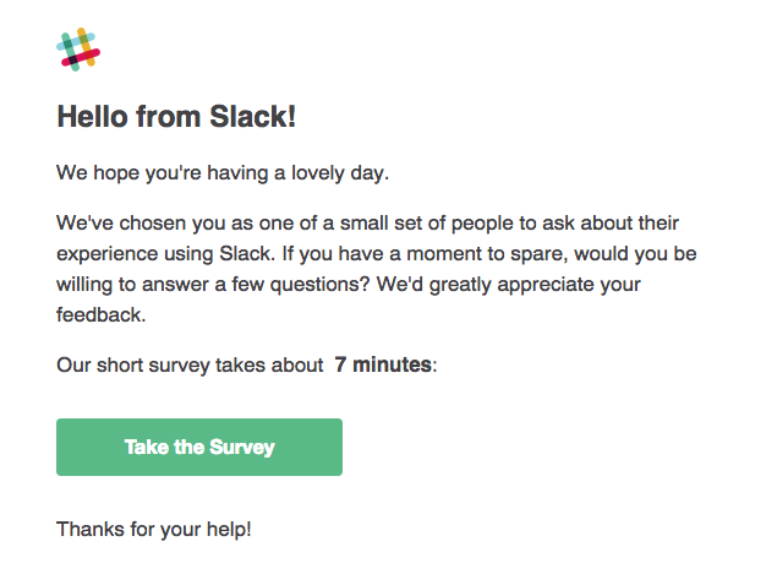
You can also use satisfaction scales here.
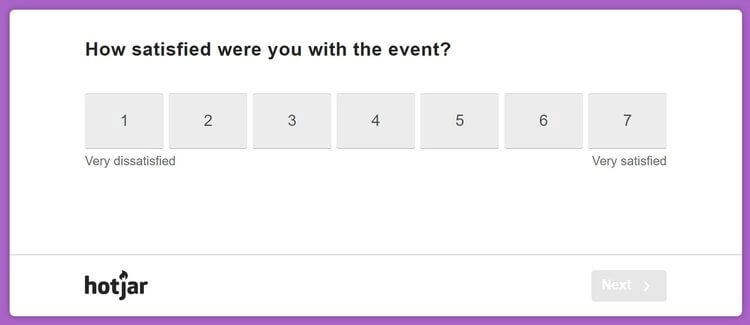
Keep in mind that it’s better to send such emails at certain stages of the customer journey, e.g. during the retention phase. To increase the likelihood of customers’ participation, give them a convincing reason for replying. For example, you can say that their input will help you make your products and services better. Alternatively, you can give a more compelling incentive, like providing a discount or a bonus for participation. If they follow your request, make sure to send a personalized reply to show that you value their feedback.
Conclusion
While collecting and analyzing data on your customers’ needs and preferences can provide you with valuable insights, they won’t be of any use if you don’t put them to practice. Before you start gathering information, think about how you can use it afterwards. During the analysis, aim to identify the most common problems your customers complain about, as well as the things they want to be improved. This will allow you to excel at many things vital to your business, such as:
- Segmenting your target audience into groups with different needs.
- Tailoring your products to customers’ needs and personalizing your marketing to enhance your unique selling proposition.
- Providing better customer service, user experience, etc.
- Designing and introducing new products and services, as well as improving the existing ones.
- Bridging the gap between your business and market demands.
Such a customer-centric, data-based approach to business is the new cornerstone of contemporary entrepreneurship. As customers' needs inevitably evolve and change over time, it’s important to do your research regularly to have your finger on the market’s pulse and develop a good competitive advantage.


